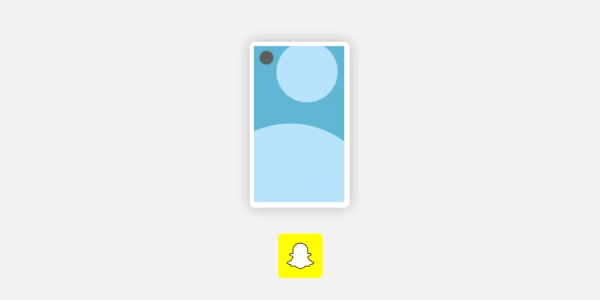Regrettably, we're going to be starting this piece by echoing a sentiment that has most likely been permanently branded onto your hippocampus. A statement you've probably seen so often that when you read it, you may well throw away whatever device you're reading this on in disgust. But we strongly advise you don't. So let's bite the proverbial bullet and move swiftly on.
Just in case you were having any lingering doubts or reservations, content is (still) king.
The chances are, your business is already producing content in some form or another.
Writing spellbinding blogs just like this one? That's content.
Regularly pushing out a podcast to the delight of your avid audience? That's content too.
Forgot to switch accounts before posting a funny cat photo on your companies Instagram story? Even that's content.
In 2020, content is everywhere, but, there is one format of content that is irrepressibly growing in popularity and usage. Video.
Now, the rise of video isn't to say that other formats of content don't have their place, they most certainly do. If they didn't I'd find myself at the Jobcentre today.
Happily, this isn't the case, leaving me free to tell you all the reasons why, how, and where your business should be producing video content.
why are we turning to video?
There is a multitude of mediums you can turn to for creating and pushing out your video content.
Stating the obvious, Youtube is just such a channel, and probably the best medium for embedding your video assets into other content forms such as a blog, which you'll see demonstrated to mesmerising effect very shortly.
Beyond the behemoth of video-sharing that is Youtube, you may turn to use Facebook, Twitter, Instagram, or Snapchat. If you think of your company as being super-hip and down with da kids, you may even try your hand at TikTok.
Irrespective of what medium you choose to use, there is an obvious and recurring theme, all of these are channels of social media.
But why has video become such a popular vehicle for communication in marketing?
This is incredibly easy to answer. It's simply better.
No, seriously it is!
Think about it, we humans are a species that just so happen to be visually wired. 90% of the information our brain processes is visual. Thinking about it in this context, it's common sense, right?
To help shed a little more light on why exactly we are turning to video content, I pestered our Paid Social Media Manager, Robin Brooks until he sat down to record a video (of course) to share some of his expert thoughts on the subject.
Naturally, many will still have their own doubts about this. However, I hate to break it to you, but the proof is in the pudding.
I see video as a mega-trend
~ Mark Zuckerberg, Facebook
In 2019, internet users averaged 6 hours and 48 minutes per week watching videos, representing a 59% increase over the last three years. This gives us tangible evidence that the demand for video is only going in one direction, upwards.
On the face of it though, you may find yourself thinking that nearly seven hours doesn't sound that amazing, and we hear you, six and three quarters isn't that big a number in the grand scheme of numbers.
So how about this?
We watch 1 billion hours worth of video on YouTube every single day.
Just take a minute to think about that.
One Billion Hours.
That's the equivalent of 60,000,000,000 minutes.
Which works out as being the same as 41,666,666 days.
Which is also the same as 114,155 years...give or take a couple of months.
That's Mental.
And then away from YouTube, there's a never-ending stream of video content on Facebook, Twitter, Instagram, Snapchat, and most recently TikTok.
capturing attention along the spectrum of video types
At this point, I'd reckon that your thoughts are curtailing to something along the lines of the following...
How can I make my business' video content stand out amongst the billions of hours watched every single day?
~ You
It's a good question. One we have every intention of answering for you.
It's true that there is a myriad of video content out there that your target audience might already be watching. It's also true that competing for their attention is no easy task, but it can be done.
As the Attention agency, we'd like to think that we're perfectly placed to provide some pointers.
So, without further ado, let's head back to Robin for his own expert advice.
To really sink your teeth into when and where these types of video content should be used, there's one thing you need to understand.
The video types within this spectrum cater to a state of mind more than anything else.
So, to really help you get inside the minds of video consuming audiences, let's break the audiences down by video type.
on the go
Just as Robin tells us, on the go content tends to be brand message focussed. A news-feed based metaphorical slap in the face that desperately vyes for your immediate short-term attention.
The difficulty in producing impactful on-the-go videos lies in why they're so short in the first place.
They're so short because they're targetting individuals demonstrating a minuscule attention span. Individuals who absently amble through their news-feed with no real aim or direction. Sadly research indicates that this behaviour accounts for 70% of our time spent consuming video.
Targetting these consumers via stand-out on-the-go video content will always be a tricky affair, simply because unless the content really pops, the consumer just keeps scrolling.
lean forward
Lean forward video content relies on the consumer actively engaging with the video content you've produced. Imagine that, a human being having a meaningful interaction with content you've poured blood, sweat and tears into producing for them. Nuts.
We'd define lean-forward video content as generally being a little longer. It's content that typically has more of a message, enticing the consumer in to watch on, engage, and in an ideal world, share that content.
Research indicates that the state of mind required for lean-forward video content accounts for approximately 20% of the time-consuming video.
lean back
These are the kind of videos that run within other videos. Video-ception. More commonly known as in-video ads.
These are short and to the point. After all, we wouldn't want them to be so long that the user exits the app/website altogether.
As Robin informs us, 5-10 seconds is the sweet-spot for lean-back video content.
They're used to capitalise on users with a high attention span, actively watching content they've looked to find. It's a frame of mind that accounts for approximately 10% of time users spend consuming video content.
which video formats should you be using?
Working out what format of video you should be using is no doubt confusing.
Should I be posting on Facebook? Youtube? Twitter? Instagram? Vimeo, wait, is that still a thing?, Snapchat? TikTok? (what the hell even is TikTok?)
Should it be a short video? Should it be a long video?
Should the content be ephemeral or permanent?
What dimensions should I use?
What resolution is best?
Do I need subtitles?
How do I even make it?
Yeah...it's a lot to think about. But, it's also vital to get right if you're prioritising the production of video content within your content strategy.
which platform is best for video content?
When debating which platforms your video is most suited to, the best answer is, in fact, all of the above.
Each platform has its own uses, usage habits amongst its users, pros, and cons.
Your content is there to be recycled. Doing anything other than plastering it across every channel you reasonably can only narrows its reach.
You'd be mad as a hatter to do all that hard work and then narrow your scope to a single channel of distribution.
short videos vs. long videos, which should you be using?
This depends on the sort of content you're looking to produce.
There is most certainly still a place for long-form content. But, shorter videos are becoming increasingly popular and impactful. This popularity can be attributed to lower attention spans and the rise of ephemeral content.
Okay, so shorter videos seem the way to go, but how short is short?
It will vary depending on the message you're looking to push through the video. If you're looking to hit the sweet spot, 15 seconds is the figure commonly tossed around.
For those producing long-form content, do not despair. It's incredibly easy to break your content down step by step to fit shorter video formats such as social media stories.
This takes us back to how vital content recycling is when producing video.
ephemeral vs. permanent video content, which should you using?
Much like the previous point of whether size matters, there's a time and place for both ephemeral and permanent content.
Making a case for permanent content, well, the clue is in the name. It will stand the test of time, hopefully accruing an increasing number of views and engagement along the way.
Permanent videos also allow for greater flexibility once that content is shared. For example, with a video on YouTube:
Want the video on your website? Embed it.
Want to pop it in an email? Copy and paste the link.
Want to repost it on your social? Download the file and get posting.
Then there's ephemeral content, a format which goes hand-in-hand with shorter videos. Its popularity fuelled by the rise of stories on social media platforms including:
- Snapchat, the original trendsetter.
- Instagram, who took the concept and perfected it.
- Facebook, who shamelessly jumped on the bandwagon.
- Whatsapp, I have no words, utterly unnecessary.
For the most part, ephemeral content is based around vertical video.
Using vertical video has several benefits in itself. It's a format aimed squarely at smartphone users. The content dominates screen estate, removing all distractions from your video, which can only be a good thing.
It's also a format that yields great results. 78% of consumers report finding vertical video formats to be very engaging.
what dimensions and resolution should i be using?
This will depend on what social channels you want to share your content. Each has there own guidelines for different types of posts.
So, let's break it down platform by platform.

Choosing between video formats on Facebook is an unequivocal nightmare. They give us so much damn choice! Handily, we have a quick guide to each type of video content. Here you'll find the dimensions and resolution recommended for each video format.

Optimising video content for Instagram is a comparatively simple affair with significantly fewer video formats vying for your consideration.

God bless Twitter for keeping things simple. The platform sticks with two formats of in-feed video content irrespective of whether the video is organic or a paid ad.
snapchat

Snapchat is a case of one size fits all for video content.
If using video content on Snapchat, you should be aiming for a 9:16 aspect ratio at 1080 x 1920 Pixels.
do i need subtitles?
Yes. Yes, you do.
You really, really do.
Research tells us 98% of people watch video content without sound.
Without subtitles and sound, will your audience have a clue what you're going on about?
Nope.
Without subtitles, all that effort you put into creating the video content will be made moderately redundant.
how do i even make it?
That's a great question, though perhaps one that is difficult to answer in boring ol' text.
If only we had a social media expert to talk us through it, oh wait, we do.
Robin, back to you in the studio...
What makes a good video for paid social
So, you now know how to make your video stand out from the crowd. You know what the perfect format for your video is. But how do you use your video within your content marketing strategy?
As mentioned previously the most used medium for watching video content is social media.
If your content marketing strategy extends to social media then it stands to reason that there's a good chance you're using paid social to widen the net of your content to as many people as possible.
The question then becomes 'what makes for a good paid social video?'
So there you have it, folks. The contents of a good video for paid social.
We also feel that it's important to note that the overall aim for paid social is capturing attention.
If that's not the case for your business, we seriously question why you're pursuing the paid element of paid social.
Anyway, we do have a few further pointers for capturing attention with paid social as the vehicle for video content.
- As highlighted by Robin in the previous video, start with the most captivating elements within your video. Grab your audience by the scruff of the neck and entice them to watch on.
- Pick your thumbnails wisely. Make them impactful and ensure they don't get lost within your audiences jam-packed news feed.
- Make your content short and snappy. Aim for that 15-second sweet spot we previously talked about. If you can't succinctly explain what you have to offer your target audience in 15 seconds or less, they'll be better served to take their custom elsewhere.
- In the same vein of keeping your videos short and snappy, we'd emphasise that snackable content is paramount. Don't try to overload your consumers with information in 15 seconds or less. Not only does it make for a shoddy video, but it also gives your consumer less inclination to complete an action to find out more.
So there you have it folks. If there is anything you take away from this content piece today, let it be Robin's top 5 tips to follow when looking to master the crafting of creative video content in 2020's mobile-first world.
Use it to replace the photos of your kids/partner in the hallway by getting a tasteful 30" x 40" frame to put it in, such as this one.
If you're redecorating and want to add a touch of colour as well as a talking point at dinner parties, use it as a mural, or even wallpaper for all four walls.
Or you could just print it off and have it in a folder or keep it on your desk. It's up to you really.




